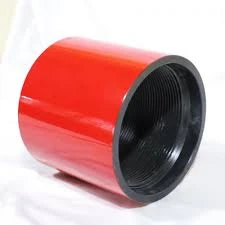- Afrikaans
- Albanian
- Amharic
- Arabic
- Armenian
- Azerbaijani
- Basque
- Belarusian
- Bengali
- Bosnian
- Bulgarian
- Catalan
- Cebuano
- Corsican
- Croatian
- Czech
- Danish
- Dutch
- English
- Esperanto
- Estonian
- Finnish
- French
- Frisian
- Galician
- Georgian
- German
- Greek
- Gujarati
- Haitian Creole
- hausa
- hawaiian
- Hebrew
- Hindi
- Miao
- Hungarian
- Icelandic
- igbo
- Indonesian
- irish
- Italian
- Japanese
- Javanese
- Kannada
- kazakh
- Khmer
- Rwandese
- Korean
- Kurdish
- Kyrgyz
- Lao
- Latin
- Latvian
- Lithuanian
- Luxembourgish
- Macedonian
- Malgashi
- Malay
- Malayalam
- Maltese
- Maori
- Marathi
- Mongolian
- Myanmar
- Nepali
- Norwegian
- Norwegian
- Occitan
- Pashto
- Persian
- Polish
- Portuguese
- Punjabi
- Romanian
- Russian
- Samoan
- Scottish Gaelic
- Serbian
- Sesotho
- Shona
- Sindhi
- Sinhala
- Slovak
- Slovenian
- Somali
- Spanish
- Sundanese
- Swahili
- Swedish
- Tagalog
- Tajik
- Tamil
- Tatar
- Telugu
- Thai
- Turkish
- Turkmen
- Ukrainian
- Urdu
- Uighur
- Uzbek
- Vietnamese
- Welsh
- Bantu
- Yiddish
- Yoruba
- Zulu
Stainless Steel Couplings for Enhanced Durability and Performance in Various Applications
Understanding Stainless Steel Couplings A Focus on 3 and 4 Variants
Stainless steel couplings are essential components in various industrial applications, particularly in piping and tubing systems. They serve the vital purpose of connecting two segments of pipes or tubes, ensuring a leak-proof and secure transition. Among the various sizes available, 3 and 4 couplings are popular choices due to their versatility and compatibility with standard piping systems. In this article, we will explore the attributes, applications, and benefits of stainless steel couplings, with a specific focus on the 3 and 4 variants.
What are Stainless Steel Couplings?
Stainless steel couplings are devices used to join two shafts, tubes, or pipes. They can be categorized into different types, including threaded, slip-on, and welded couplings. The choice of coupling type depends on the specific application and the requirements of the piping system. Stainless steel, as a material, offers significant advantages such as resistance to corrosion, durability, and strength, making it an ideal choice for various environments, including marine, automotive, and industrial settings.
Key Characteristics of 3 and 4 Stainless Steel Couplings
1. Material Composition Stainless steel couplings are typically made from alloys that include chromium and nickel, which provide excellent rust and corrosion resistance. Common grades include 304 and 316 stainless steel, with 316 offering superior resistance to chlorides, making it suitable for harsher environments.
2. Size and Compatibility The 3 and 4 couplings are designed to fit standard pipe sizes, making them compatible with a wide range of fittings and pipes. This compatibility is crucial in retrofit projects or repairs, where existing infrastructures need to be maintained or replaced.
3. Pressure Ratings Stainless steel couplings can withstand high pressures, making them ideal for high-pressure applications, such as in chemical processing or oil and gas industries. These couplings usually have specified pressure ratings, ensuring they can handle the demands of the system.
4. Ease of Installation Many designs of stainless steel couplings allow for quick and easy installation. Slip-on and threaded types can be installed with basic tools, reducing labor costs and downtime during maintenance or installation.
5. Temperature Resistance Stainless steel couplings can operate effectively in a wide range of temperatures. Their thermal resistance ensures they maintain structural integrity even under extreme conditions, making them suitable for many industrial processes.
Applications of Stainless Steel Couplings
Stainless steel couplings, especially the 3 and 4 variants, are used across various industries
stainless steel coupling 3 4

- Water and Wastewater Treatment These couplings are commonly found in the piping systems of treatment plants, where they connect different segments of pipes and allow for the efficient movement of water and waste
.- Oil and Gas In the oil and gas sector, stainless steel couplings are vital for connecting pipes that transport crude oil or gas under high pressure, ensuring safety and preventing leaks.
- Food and Beverage Industry Given their resistance to corrosion and ability to maintain hygiene, stainless steel couplings are also widely used in food processing and beverage manufacture, facilitating the safe transport of liquids.
- Pharmaceuticals The pharmaceutical industry requires strict hygiene standards. Stainless steel couplings meet these requirements while being able to handle various substances involved in drug production.
Benefits of Using Stainless Steel Couplings
The advantages of using stainless steel couplings are manifold
- Longevity Their resistance to corrosion and high-temperature tolerance results in a longer service life, reducing the frequency of replacements.
- Safety The reliability of stainless steel fittings ensures a safe transport of fluids, which is especially critical in industries dealing with hazardous materials.
- Low Maintenance Stainless steel couplings require less maintenance due to their durable nature, saving time and costs in the long run.
- Environmental Impact Stainless steel is recyclable, making it an environmentally friendly option for piping solutions.
Conclusion
In summary, 3 and 4 stainless steel couplings are integral components in many industrial applications. Their unique attributes, such as corrosion resistance, pressure handling capability, and ease of installation, make them ideal choices for connecting piping systems across various sectors. Understanding the importance of these couplings can aid engineers and procurement specialists in making informed decisions for their projects, ensuring efficiency and safety in fluid transport systems.
-
Tubing Pup Joints: Essential Components for Oil and Gas OperationsNewsJul.10,2025
-
Pup Joints: Essential Components for Reliable Drilling OperationsNewsJul.10,2025
-
Pipe Couplings: Connecting Your World EfficientlyNewsJul.10,2025
-
Mastering Oilfield Operations with Quality Tubing and CasingNewsJul.10,2025
-
High-Quality Casing Couplings for Every NeedNewsJul.10,2025
-
Boost Your Drilling Efficiency with Premium Crossover Tools & Seating NipplesNewsJul.10,2025







